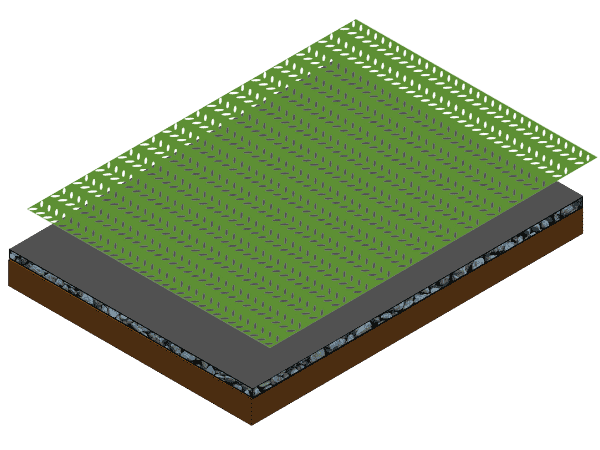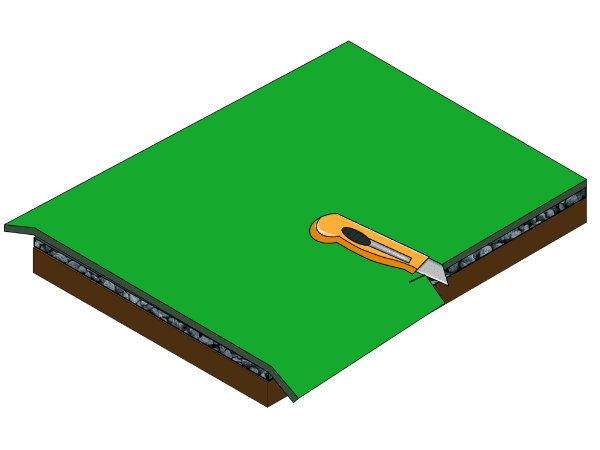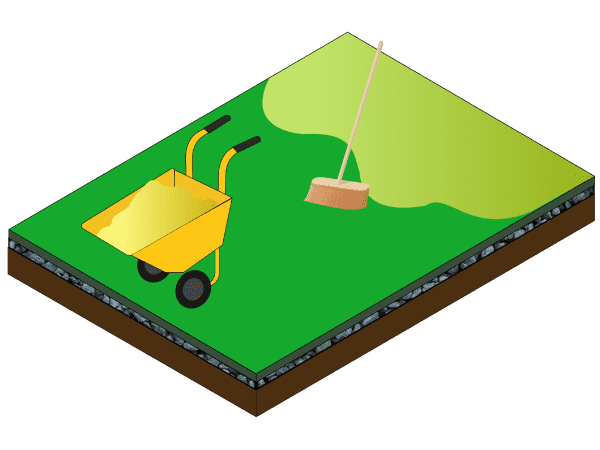
Remove any rocks or sprinklers that may affect the artificial grass installation. Dig to a depth of 70 mm to 80 mm. This is going to be the bed where you'll lay out the artificial turf.
Get proper tools well prepared to ensure the artificial grass installation goes smoothly. It not only reduces maintenance costs, but also extends the service life of artificial grass.

Remove any rocks or sprinklers that may affect the artificial grass installation. Dig to a depth of 70 mm to 80 mm. This is going to be the bed where you'll lay out the artificial turf.

Lay the soil on the existing ground and then pave a layer of hydrophobic gravels and then lay a layer of asphalt or cement.

When the base layer laying is finished, compact the base with a compactor to create a perfect base for artificial grass installation. The perfect depth of a sub-base for artificial grass is around 15 mm to 20 mm.

Lay the shock pad to provide users with good elasticity and cushioning effect. It also helps to extend the lifespan of artificial grass.

Make sure always lay artificial grass pieces in the same direction. It is recommended that artificial turf is put in place for at least 3 hours to prevent artificial turf from wrinkling.

Put the turf tape at the seams between artificial grass pieces to make sure the artificial grass is connected as a whole and firmly secured.

Use a sharp utility knife to cut and trim your artificial turf to ensure the turf edges are cut neatly and meet your desired shape./p>

Place a nail every 25 cm to 30 cm, secure the artificial turf and make sure your artificial turf stays in place.

Lay the infill on artificial turf and use a rake to gently spread the sand throughout the artificial turf. If the artificial turf does not need infill, brush the artificial turf to keep grass fibers upright.